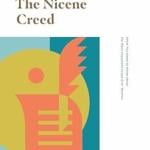That’s the second sentence in Darren Aronofsky’s Noah. It’s printed on the screen for all to see. It is accompanied by an image of a serpent flicking its tongue at the camera. And it is followed by images of violence and destruction.
To those who are even half-familiar with the story of the Fall, you might think that this would all seem pretty straightforward. But no. Instead, a bizarre idea has surfaced in recent days, to the effect that Aronofsky’s film espouses a kind of Gnosticism.
In Gnostic mythology — or at least those parts of it that get the critics of Noah so excited — the serpent was not evil but good. It brought wisdom and the knowledge that human beings are actually divine spirits trapped in flesh. It brought the knowledge that Creation is an illusion meant to lull people into forgetting their true divine nature. In Gnostic mythology, the serpent did not bring evil. It did not turn mankind into a blight against Creation. Instead, it convinced mankind that Creation — and the one who made it — were blights against the true divinity within us all.
And this, bizarrely, is the theology that some people now insist they see in Noah.
Despite the film’s second sentence. Despite the film’s clear link between the eating of the forbidden fruit and the first murder committed by Cain. Despite the constant flashbacks to Cain’s murder of Abel. Despite the extended flashback in which Noah tells the story of Creation, of how mankind wrecked it all, and how God is going to start all over again — possibly without keeping any humans around this time.
The “Noah is Gnostic” theory was first floated, to my knowledge, by a theologian named Brian Mattson, whose denunciation of the film went viral a few days ago. I responded to Mattson’s argument — and to his subsequent effort to dodge the points I made — in a blog post here. That post has since attracted a few dozen comments, quite a few of which I have found enlightening and informative.
But the “Noah is Gnostic” meme persists, and has now popped up in various other outlets as well. Very rarely, however, do the people who put forth this theory offer any actual evidence to support it.
For example, Charlotte Allen, writing in the Wall Street Journal, merely says it is “likely” that Aronofsky based the film on “Gnostic texts that present the biblical God as evil”, but she doesn’t say which texts, nor does she say how the film supposedly uses them. Nevertheless, her editors apparently felt this was a significant enough point that they put it in the subheadline at the top of her article, stating: “Hollywood’s latest story of the Ark is more Gnostic than Jewish, Muslim or Christian.”
Why does this bizarre, unsubstantiated theory persist? Two reasons come to mind.
First, in some Christian circles, “Gnosticism” has become kind of a catch-all denunciation of anything spiritual or mystical that a given critic doesn’t like. In a similar vein, a friend of mine noted on Facebook that some professors now refuse to discuss “Gnostic” readings of some texts simply because the label is “tossed about so broadly by so many academics as to make it essentially meaningless.”
So when I see people throwing the “Gnostic” accusation around without any substantiation, the word has no meaning for me, beyond conveying a sense that the person who is using that word doesn’t like the thing that they are describing. (It’s kind of like how the phrase “biblically accurate” has become pretty much meaningless in these discussions, conveying nothing beyond the fact that the person who uses it is approving of the thing that they are describing with that label.)
But the second reason the meme persists is because of an actual element in the film: namely, the snakeskin worn by the “good” descendants of Seth, including Noah’s father Lamech.
In case you haven’t seen the film, a few images of the snakeskin have surfaced in the trailers and featurettes released so far. You can see an early version of the special effect whereby it seems almost like the snakeskin will pass from the adult Lamech to the young Noah (the finished effect is less pronounced, if memory serves):
You can also see it wrapped around Lamech’s arm when he is struck by Tubal-Cain:
This particular snakeskin does, indeed, come from the serpent that tempted Adam and Eve. It is, in fact, shed by the serpent before it tempts them. So, the argument made by people like Mattson essentially boils down to: “The serpent was bad. The characters in this film treat a snakeskin as though it was good. Therefore, Gnostic!”
But is it really that simple? No, of course not.
I think part of the problem here is that Christians have been brought up to assume that the serpent in the Garden of Eden was really Satan in disguise. The actual text of Genesis never says this — it simply says that “the serpent was more crafty than any of the wild animals the Lord God had made” — but in this, as in so many other areas, Christians read the Bible through the filter of later traditions rather than reading just what the text actually says.
And that’s okay. We all read texts within some sort of interpretive framework. Even the principle of “sola scriptura” is ultimately a non-scriptural framework within which people try to read the scriptures and find some meaning in it. The problem comes when we forget that we are applying an interpretive framework to the text, and when we neglect to ask what sort of interpretive framework other people are using. It might not be the same as ours. It might not share the same assumptions as ours.
So, to a Christian who assumes that the serpent in the Garden of Eden was always Satan in disguise, there can never be anything good about that serpent. Everything about it must be diabolical. Including any skin that it sheds.
The possibility that the serpent might simply be an animal — and that it might have been good originally, just like all the other land animals that God deemed “good” when he created them on the sixth day — simply never occurs to those viewers.
And thus, the possibility that the serpent in this film was originally good, and shed its goodness when it turned to evil — thereby losing its luminescent skin just as Adam and Eve will eventually lose their “garments of light” when they commit their first act of disobedience — simply never occurs to many Christian viewers of the film.
Thankfully, Noah co-writer Ari Handel has now addressed the snakeskin question in a short Q&A at Relevant magazine. He makes the point that the snakeskin stems, in part, from the Jewish traditions that he and Aronofsky turned to for ideas:
Q: Can you explain the snakeskin that gets passed from generation to generation? That does seem a little Gnostic.
A: When Adam and Eve are expelled from the Garden, it says God gave them a garment of skin—sort of a parting gift from God to mankind as we leave Eden and go out into the world. So we wondered what that was—and as we looked at commentaries about it, one of the common ones was that it was the skin of the snake. We wondered why that would be, and it occurred to us that God made the snake. The snake was good, at first. But then, the Tempter arose through it. In our version, we have the snake shed that skin, and the shed skin is the shell of original goodness that the snake left behind when it became the Tempter. It’s a symbol of the Eden that we left behind. It’s a garment to clothe you spiritually.
There are many ways that one could respond to this. We could ask, for example, if the filmmakers, who follow the Bible in depicting Noah and his family as vegetarians but avoid showing Abel and Noah making animal sacrifices, were trying to dodge the implication that God killed animals to make the first clothes. But can we at least take the filmmakers at their word, when they say that there is a difference between the serpent’s original skin, which was good when God created it, and the actual serpent that went on to play a part in corrupting the world, just as it does in the Bible?
Note, in particular, how Handel connects the goodness of God’s original Creation to the ultimate corruption of the serpent and everything it influenced: “The snake was good, at first. But then, the Tempter arose through it.” This suggests that the serpent in the film was an innocent animal that is somehow possessed by Satan, or the equivalent of Satan. Either way, the tempting it did was clearly Not Good.
Mattson, not surprisingly, thinks that it’s giving the film too much credit to say that the people who made it mean what they say. In one of his posts, he writes:
It is not me who is stretching for fancy interpretations here. That was what I expected at first with my movie review: “Boy, this guy’s really stretching. He’s crazy!” The fact that my critics are the ones searching for ways to interpret the symbolism of the texts and motifs they admit Aronofsky used means that it is not they who are on the solid ground.
Well, no. It doesn’t mean that at all. It means that we are paying attention to what’s actually in the film. Mattson, remember, got certain key plot points wrong in his original critique of the film. And if he can’t even get the story right, then what sort of ground is his interpretation of that story standing on?
Brian Godawa, who referenced Mattson’s “Noah is Gnostic” theory repeatedly in a post two days ago on ‘The Subversion of God in Aronofsky’s Noah’, drops the subject in his most recent post, on ‘The Subversion of the Serpent in Aronofsky’s Noah’, in which he argues that snakes and serpents are never good in the Bible:
All imagery of the Serpent throughout the Bible is always negative. Even the bronze serpent on the pole in Numbers 21 that healed the stricken was still the image of the deadly snakes hung in judgment (healing through judging the serpent).
Well, there are two ways one can look at that. You can argue that the deadly snakes that bit the Hebrews were agents of divine wrath, whereas the brass serpent on the pole is an agent of divine mercy. Or you can argue — as Christians especially are wont to do, in light of Jesus’ identification with the brass serpent in John 3 — that the serpent on the pole represented the sin that was being punished.
But are there really no other positive examples of serpents or snakes in the Bible? When God turns the staffs of Moses and Aaron into serpents, as a sign of his power, is that a negative thing? (Well, okay, admittedly the next sign God gave Moses was turning his skin leprous. And the third sign involved turning water to blood. Those don’t seem like very positive things.) What about when Jesus tells his followers to be “as shrewd as snakes and as innocent as doves”? Is shrewdness a bad thing?
And what do we do with that blessing Jacob gives his sons in Genesis 49, where he predicts that “Dan will provide justice for his people as one of the tribes of Israel. Dan will be a snake by the roadside, a viper along the path, that bites the horse’s heels so that its rider tumbles backward”? Is he saying the tribe of Dan will be both good and bad? Or is being a viper along the path somehow related to providing justice for his people? (Note how, when he blesses his next son, Jacob declares: “Gad will be attacked by a band of raiders, but he will attack them at their heels.” Clearly attacking people at their heels is not presented here as an inherently bad thing.)
Godawa goes on to declare:
The Serpent is a “creator of life” in this story [i.e. in the film], not the bringer of death as he is in Genesis.
To which all I can do in response is shake my head and point back at that opening title sequence. “Temptation led to sin.” And sin clearly led to death, chaos, and judgment.
Really, how much clearer could it be?
Mattson and Godawa do make a valid point about the silence of God in this film, which stands in stark contrast to his verbal involvement in the biblical story of Noah. But while this is problematic, I don’t think it’s as sinister as they suggest.
I may address that in a later post, time permitting.
April 9 update: I just noticed that Mattson commented on the Relevant interview last Friday, and the rhetorical sleight-of-hand he uses is really quite something:
About the snake skin thing, Handel ought to know what he was thinking, and I’m glad he cleared it up. The idea of a “skin” of immortality that the Serpent shed is found in nascent form, (one source, no doubt, among others) in Philo of Alexandria, Questions and Answers on Genesis, I, 33. His idea is that the snake wanted to appear young and innocent, so as to deceive Eve into thinking he had the key to remaining… young and innocent. Suffice it to say, there’s nothing about passing this skin along as an artifact.
It’s interesting, to be sure. But if you’re unaware of who Philo is, let’s just say that he is the father of reading the Hebrew Bible in obscure, allegorical ways that conform it to Platonic philosophy (i.e., the “graded” universe of spirit/mind/male=”higher and good,” matter/flesh/female=”lower and bad”). He’s the head of a stream that ultimately forms the river of precisely the kinds of Neoplatonic speculation I originally identified in my review.
See what Mattson did there?
He devotes one sentence to Handel’s interview, without saying what, exactly, Handel said, and then he starts talking about Philo and Neoplatonism and “skins of immortality” as though these subjects had anything to do with Handel’s interview.
Mattson even admits that there is “nothing” in Philo “about passing this skin along as an artifact” — but the whole point of Handel’s comment was that he and Aronofsky based the snakeskin on commentaries that did, in fact, say that the skin of the serpent had been given to Adam and Eve as some sort of artifact, as a relic from Eden.
So Mattson all but admits that Philo had nothing to do with this!
Why bring Philo up, then? And why bring up all that other stuff if it has nothing to do with what Handel actually said? Couldn’t Mattson do a little Googling or something and try to figure out which texts do fit the description given by Handel?
Here, for example, is what I’ve found, in just a few minutes of searching the web. The Targum Pseudo-Jonathan on Genesis 3:21 states:
And the Lord God made garments of glory for Adam and for his wife from the skin which the serpent had cast off (to be worn) on the skin of their (garments of) fingernails of which they had been stripped, and he clothed them.
Similarly, in the midrash, Rabbi Eliezer writes:
Of the skin that the serpent sloughed off God made coats of glory for Adam and his helpmeet; as it is said, ‘And God made for Adam and his wife coats of skin and He clothed them.’
A commentary at Aish.com sees this in a negative light:
The Targum (Pseudo) Yonatan says the leather came from something near at hand, from something to be found at the scene of their crime. God gave them garments of snake skin, as if to say: They were seduced by the serpent, the result was their nakedness, and now they will be wrapped in a fitting symbol of their treachery.
Others put a slightly more positive spin on the snakeskin. Commenting on the quote from Rabbi Eliezer, Avivah Zornberg writes:
The problem that the midrash intends to resolve is the origin of the first clothes. Described as “coats of skin,” they seem to depend on death: some animal has been killed and flayed to make these first human garments. Since death has not yet entered the world, the midrash solves the problem with the figure of the sloughed skin of the serpent. That is, the skin foreshadows death, represents the serpent’s consciousness of death-in-life. In effect, the facade of the serpent goes to make dignified coverings for human beings. The paradox is striking: the serpent, all deception, representation, plausible language, verbal display, is reconstructed into an attribute of human dignity.
A pseudepigraphal text known as 3 Baruch — probably written in the 2nd century AD — also casually mentions that “the first Adam … took the serpent as a garment.”
So. Adam and Eve wearing the skin shed by the serpent as a garment is an established part of the Jewish tradition — and there is some debate as to whether this should be understood symbolically as a negative thing or as a paradoxically positive thing.
Likewise, it seems to me that there should be plenty of room to debate the significance of the snakeskin in this film. But you’d have to pay attention to how the filmmakers follow the tradition — and how they don’t — to make any real sense of it.
August 10 update: I have made a slight tweak to the second paragraph. Originally it said that the second sentence of the film was “accompanied by an image of a serpent shedding its light skin and emerging as a darker, more foreboding creature.” But now that I’ve had a chance to watch the film again on home video, I see that it does not depict the actual skin-shedding until the creation sequence much later.
















